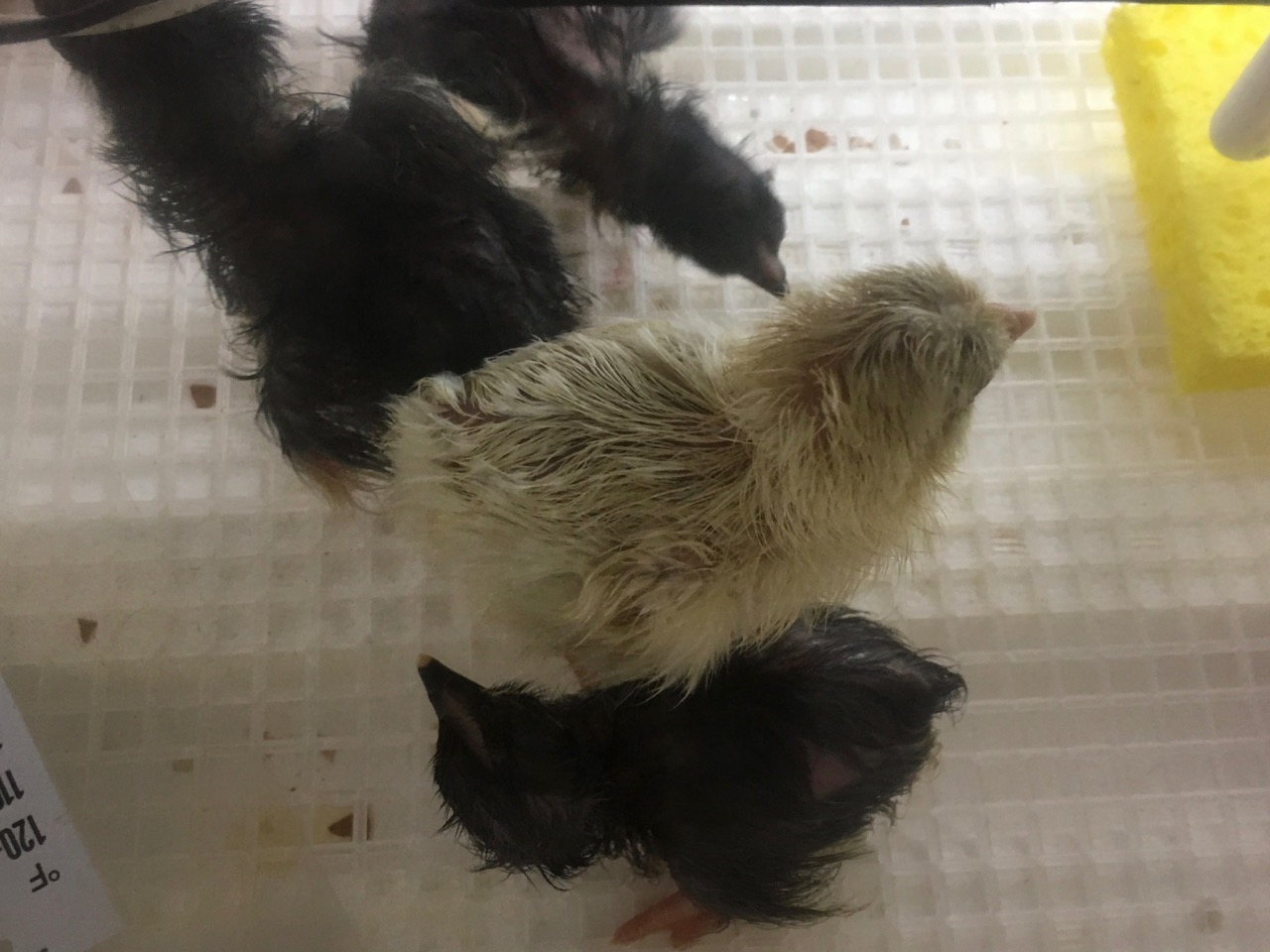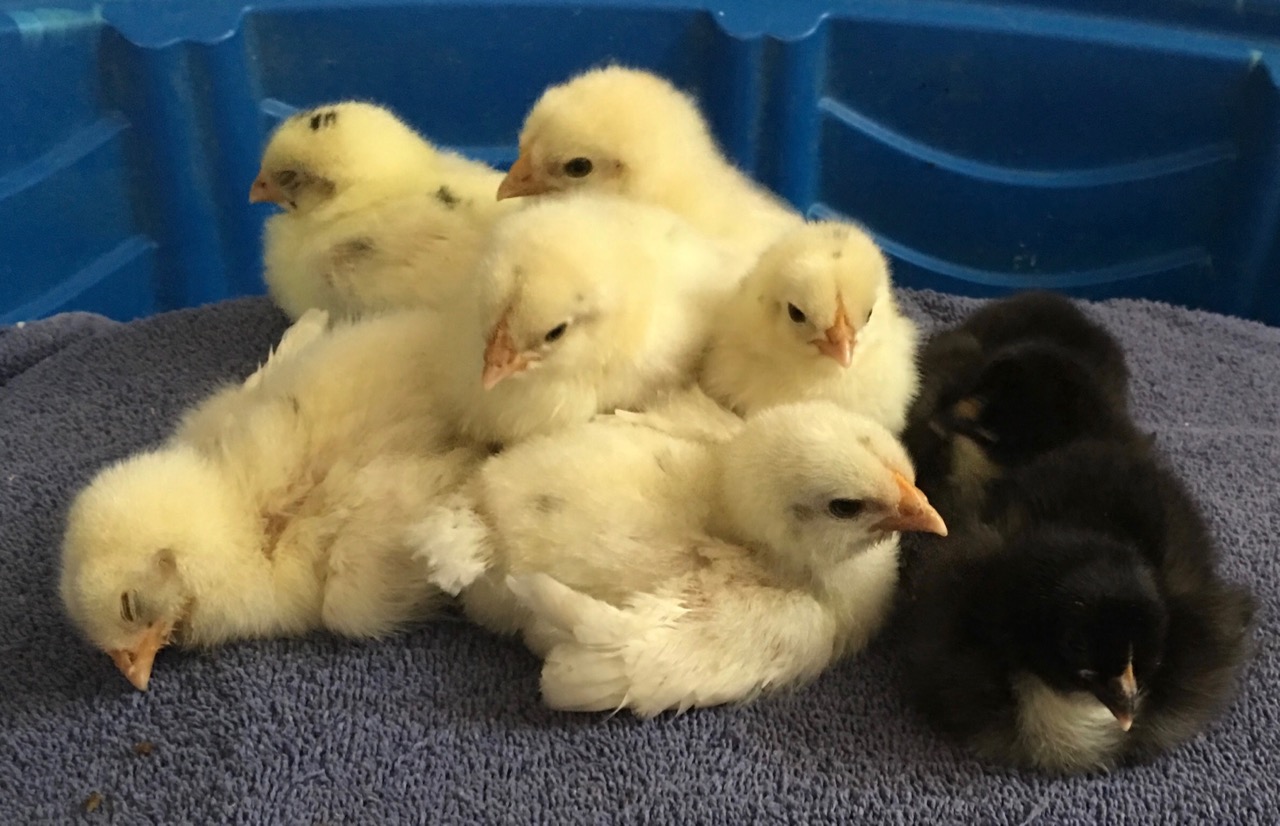
We’re always excited when it’s hatching day…it’s really amazing that fully-formed chicks, ready to scratch and find food, emerge from eggs that seem much too small to contain them. They work so hard to hatch, too; sometimes, they’re exhausted after hours of struggle and they simply crash out on the incubator floor. That rest is well-deserved.
This round, we set French Black Copper Marans (purebred) and American Bresse x French Black Copper Marans eggs. The FBCM eggs are dark brown, sometimes speckled, and highly sought after by chicken enthusiasts. The chicks are very cute, black with little white bottoms and feathered feet. The Bresse/FBCM eggs are from our handsome FBCM rooster over our friendliest white Bresse hen. The chicks look like white Bresse chicks – yellow fluffballs with yellow legs – but they each have a tiny spot or two of black on their feathers, and the tiniest hint of leg feathering. We have some older chicks that have grown out a bit, and they still look mostly like Bresse (even developing the bluish leg color) except for light leg feathering and the spots. One chick from a previous hatch even seems to have a copper hackle feather, like the FBCM! It’s going to be very interesting to see how they look in a few more months…and even more fun to see what their eggs look like.

We’ve added some new bloodlines to our FBCM stock, with two cockerels and a pullet (why do we always seem to hatch more males than females??) for additional genetic diversity. Our breeding stock currently includes the well-known Bev Davis, Wade Jeane, and Ron Presley lines, and the juveniles are from Bev Davis and Greenfire Farms lines. The new stock are exceptionally friendly and calm birds – one of the cockerels will follow the food cart and jump in to clean up any spills, and he doesn’t mind being handled. Friendliness is a desirable attribute, especially in a rooster!
If you’re wondering why we decided to hybridize the FBCM and Bresse, the short answer is that we hope to capture the best characteristics of both breeds in the cross: the Bresse’s laying; the FBCM egg color; the Bresse calmness; the FBCM thriftiness; and both breeds’ reputation for exceptional flavor. Who doesn’t like pastured chicken, especially when one of the breeds is reputed to be “the best tasting chicken in the world”?
Another motivation to hybridize is that the Bresse are so rare here that there is little genetic diversity. We’ve experienced – even with adjustments to incubation conditions as well as having a broody Muscovy sit on a clutch – difficulty hatching pure Bresse eggs, which is unsustainable and disappointing (both for us and for customers waiting for chicks). What we’ve found so far is that the AB/FBCM crosses hatch easily and are extremely vigorous right from hatch. We put them on ground from an early age, and they’ve thrived – immediately taking to eating fresh greens and insects (along with their fermented feed). We think our “dalmation” chicks are going to be fantastic layers and meat chickens. Stay tuned to see how they grow up!
